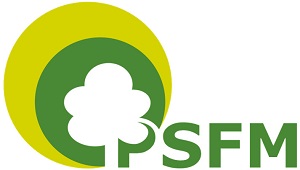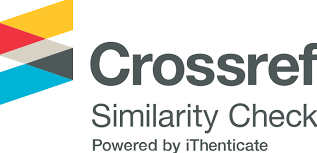HÀNH VI LỰA CHỌN CÂY CHỦ CỦA LOÀI MỌT MANG NẤM Platypus quercivorus Murayama (Coleoptera: Playpodidae) THÔNG QUA CÁC HỢP CHẤT HOÁ HỌC DỄ BAY HƠI TỪ THỰC VẬT
Từ khóa:
Chất hữu cơ dễ bay hơi, Mọt mang nấm, Platypus quercivorus, sắc ký khí - khối phổTóm tắt
Mọt mang nấm là một nhóm các loài côn trùng cánh cứng nguy hiểm cho
cây trồng lâm nghiệp. Trong rừng tự nhiên, cây chủ ưa thích của mọt mang
nấm thường được phân bố xen lẫn cùng với cây chủ không ưa thích của
chúng. Nhiều nghiên cứu cho rằng để tìm kiếm và lựa chọn được cây chủ
ưa thích mọt mang nấm đã dựa vào các hợp chất hóa học dễ bay hơi từ thực
vật. Loài mọt mang nấm Platypus quercivorus Murayama thường gây hại
nặng cho các loài cây thuộc họ Sồi tại Nhật Bản từ những năm 1980.
Nghiên cứu này được thực hiện nhằm kiểm tra phản ứng hành vi của mọt
P. quercivorus đến các hợp chất dễ bay hơi từ lá của sáu loài thực vật và
giữa trạng thái sinh lý khác nhau của các loài thực vật này thông qua một
khứu giác kế hình chữ Y. Thành phần hóa học của các hợp chất dễ bay hơi
từ mẫu lá được thu thập và phân tích bằng máy sắc ký khí - khối phổ. Kết
quả nghiên cứu cho thấy loài mọt P. quercivorus bị dẫn dụ bởi các hợp chất
dễ bay hơi từ thực vật và chúng phân biệt được các hợp chất bay hơi giữa
cây khỏe mạnh và cây bị suy yếu. Có sự khác biệt rõ rệt về thành phần các
hợp chất dễ bay hơi giữa các loài thực vật và giữa trạng thái sinh lý của mỗi
loài cây. Kết quả nghiên cứu này gợi ý rằng các hợp chất hóa học dễ bay
hơi là một loại tín hiệu giao tiếp quan trọng mà mọt P. quercivorus sử dụng
để lựa chọn cây chủ trong rừng.
Tài liệu tham khảo
1. Ahmad S, 1983. Herbivorous insects: Host-seeking behavior and mechanisms.
2. Bernays EA & Chapman RF, 1994. Host-plant selection by aphytophagous insect.
3. Byers JA, 1995. Host-tree chemistry affecting colonization in bark beetles. In R.T. Cardé and W. J. Bell (eds.). Chemical Ecology of Insects 2. 154 - 213. Chapman & Hall, New York.
4. Byers JA, Zhang QH, Schlyter F, 1998. Volatiles from nonhost birch trees inhibit pheromone response in Spruce bark beetles. Naturwissenschaften. 85: 557 - 561.
5. Camphell SA & Borden JH, 2006. Integration of visual and olfactory cues of hosts and non-hosts by threes bark beetles (Coleoptera: Scolytidae). Entomological Entomology. 31: 437 - 449.
6. Carolyn HS, Rodman RL, Pimont F, Chad MH, Joel DM, 2017. Fires following bark beetles: Factors controlling theseverity and disturbance interactions in ponderosa pine. Fire Ecology. 13: 1 - 23.
7. Ciesla WM, 2011. Bark and ambrosia beetles. In: Forest entomology: A global perspective. Blackwell, Oxford, pp 173 - 202.
8. Ito S, Yamada T, 1998. Distribution and spread of the mass mortality of oak trees (In Japanese with English summary). Journal Japanese Forestry Society. 80:229 - 232.
9. Jactel H, Halder IV, Menassieu P, Zhang QH, Schlyter F, 2001. Non-host volatiles disrupt the response of the stenographer bark beetle, Ips sexdentatus (Coleoptera: Scolytidae), to pheromone-baited traps and maritime pine logs. Integrated Pest Management Reviews. 6: 197 - 207.
10. Johnson CB, Kazantzis A, Skoula M, Mitteregger U, Novak J, 2004. Seasonal, populational and ontogenic variation in the volatile oil content and composition of individuals of Origanum vulgare subsp. Hirtum, assessed by GC headspace analysis and by SPME sampling of individual oil glands. Phytochemical Analysis. 25: 286 - 292.
11. Kashiwagi T, Nakashima T, Tebayashi S, Kim CS, 2006. Determination of the absolute configuration of quercivorol, (IS,4R)-p-meth-2-en-1- ol, an aggregation pheromone of the ambrosia beetle Platypus quercivorus(Coleoptera: Platypodidae). Bioscience, Biotechnology, and Biochemistry 70: 254 4 - 2546.
12. Kelley ST & Farrell BD, 1998. Is specialization a dead end? The phylogeny of host use in Dendroctonus bark beetles (Scolytidae). Evolution. 52: 1731 - 1743.
13. Kimmerer TW & Macdonald RC, 1987. Acetaldehyde and ethanol biosynthesis in leaves of plants. Plant physiology. 84: 1204 - 1209.
14. Liang M, Qi M, Zhang C, Zhou S, Fu R, Huang J, 2004. Gas chromatography-mass spectrometry analysis of volatile compounds from Houttuynia cordata Thunb after extraction by solid-phase microextraction, flash evaporation, and steam distillation. Analytica Chimica Acta 531: 97 - 104.
15. Lindinger W, Hansel A, Jordan A, 1998. On-line monitoring of volatile organic compounds at pptv levels by means of Proton-Transfer-Reaction Mass Spectrometry (PTR-MS): medical applications, food control, and
environmental research. International Journal of Mass Spectrometry and Ion Processes. 173: 19 1 - 241.
16. Millar JG & Haynes KF, 1998. Methods in Chemical Ecology: Chemical methods. Kluwer, Norvel.
17. Moeck HA, 1970. Ethanol as the primary attractant for the ambrosia beetle Trypodendron lineatum (Coleoptera: Scolytidae). The Canadian Entomologist. 102: 985 - 995.
18. Morries JL, Cottrell S, Christopher JF, Winslow DH, Rosemary LS, Vachel AC, Jennifer LC, Clement J, 2016. Managing bark beetle impacts on ecosystems and society: priority questions to motivate future research. Journal of Applied Ecology. 54: 750 - 760.
19. Paine TD, Raffa KF, Harrington TC, 1997. Interaction among scolytid bark beetles, their associated fungi, and live host conifers. Annu Rev Entomol 42:179 - 206.
20. Pham, D. L., Ito, Y., Okada, R., Ikeno, H., Isagi, Y., & Yamasaki, M., 2019. Effects of leaf conditions and flight activity on the behaviour of Platypus quercivorus (Murayama) (Coleoptera: Platypodidae). Journal of Applied
Entomology, 143(9), 1000 - 1010.
21. Pham, D. L., Ito, Y., Okada, R., Ikeno, H., Kazama, H., Mori, N., & Yamasaki, M., 2020. Platypus quercivorusambrosia beetles use leaf volatiles in host selection. Entomologia Experimentalis et Applicata, 168(12), 928 - 939.
22. R Core Team, 2016. R: A language and environment for statistical computing. R foundation for statistic computing, Vienna.
23. Raffa KF & Berryman AA, 1982. Gustatory cues in the orientation of Dendroctonus ponderosae (Coleoptera: Scolytidae) to host trees. Canadian Entomologist 114: 97 - 104.
24. Rudinsky JA, 1962. Ecology of Scolytidae. Annual Review of Entomology. 7: 327 - 348.
25. Schroeder LM, 1988. Attraction of the bark beetle Tomicus piniperda and some other bark and wood-living beetles to the host volatiles -pinene and ethanol. Entomologia Experimentalis et Applicata 46: 203 - 210.
26. Soné K, Ito K, Fukuyama S, Nagano T, 2000. Effects of attack time on the devel opment and reproduction of the oak borer, Platypus quercivorus (Murayama). Japanese Journal of Applied Entomology and Zoology. 44:
- 196.
27. Visser JH, 1986. Host odor perception in phytophagous insects. Annual Review of Entomology. 31: 121 -144.Visser JH & Avé DA (1978) General green leaf volatiles in the olfactory orientation of the Colorado beetle, Leptinotarsa decemlineata. Entomologia Experimentalis et Applicata. 24: 73 8 - 749.
28. Wood DL, 1982. The role of pheromones, kairomones and allomones in the host selection and colonization behavior of bark beetles. Annual Review of Entomology. 27: 411 - 446.
29. Yamasaki & Futai, 2011. Discrimination among host tree species by the ambrosia beetle Platypus quercivorus. Journal of Forest Research. 17: 149 - 155.
30. Yamasaki M, Kaneko T, Takayanagi A, Ando M, 2016. Analysis of oak tree mortality to predict ambrosia beetle Platypus quercivorus movement. Journal of Forest Science 62: 377 - 384.
31. Zhang QH & Schlyter F, 2004. Olfactory recognition and behavioral avoidance of angiosperm nonhost volatiles by conifer-inhabiting bark beetles. Agricultural and Forest Entomology. 6: 1 - 19.
32. Zhang QH, Birgersson G, Zhu J, Lofstedt C, Lofqvist J, Schlyter F, 1999. Leaf volatiles from non-host deciduous trees: Variation by tree species, season and temperature, and electrophysiological activity in Ips typographus. Journal of Chemical Ecology. 25: 192 3 - 1943.
33. Zumr V, 1989. Attractiveness of the terpene alpha-pinene to the large pine shoot beetle, Blastophagous piniperda (L.) (Col., Scolytidae). Journal of Applied Entomology. 107: 141 - 144












